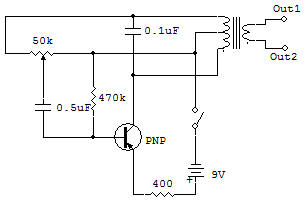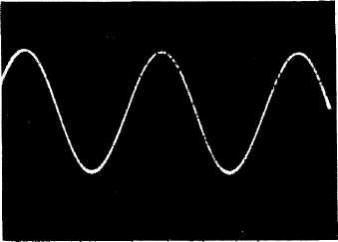

Sine wave Audio Oscillator

The purpose of this project is to consider sinewaves and a generator capable of producing sinewave output signals. A sinewave signal is used when testing HI Fl amplifiers for distortion.
First let's consider what a sinewave is.
In one simple sentence it may be defined as "a wave of pure single-frequency tone". For example, a 400 hertz sinewave is an AC volume which alternates throughout 400 cycles in each second of time, and contains no other frequency components.
A 400 hertz wave which is not a sinewave is actually composed of the 400 hertz wave (fundamental), a 800 hertz wave (2nd harmonic), 1200 hertz wave (3rd harmonic), etc., depending on the actual waveform as viewed on an oscilloscope.
With a little training anyone can be taught to distinguish between a sinewave and one which is not. With this ability you may be able to test amplifiers and circuits by injecting a sinewave and listening to the output. The results of amplitude nonlinear distortion is the generation of undesired harmonic frequencies. These newly-generated frequencies are easily detected by the trained ear.
The circuit used here to generate a sinewave of about 400 hertz has the following features:
1. A 0.1 uF Capacitor across the Transformer to form a tank circuit resonant at about 600 hertz.
2. A 470K base-bias Resistor to turn the Transistor ON only a small amount.
3. An adjustable feedback circuit, composed of the 50K Control and 0.05uF Capacitor.
4. A 100 ohm emitter-swamping-resistor to help minimize the nonlinear B-E Transistor resistance.
5. The output should be connected to an amplifier input or Earphone. TO EARPHONE. - AMPLIFIER. ETC.

The procedure for getting this oscillator to produce a sinewave output is also a good one for training you to distinguish a sinewave from a distorted wave.
Connect the Earphone across the output of the Transformer. Start operating with the Control on maximum. Slowly decrease the Control while listening to the tone quality of the output. You will reach a point, before oscillations stop, where one tone is heard.
This last clear-sounding tone is the sinewave. Repeat this Control adjustment until you have no trouble distinguishing between a sinewave and a distorted wave. The most stable sinewave oscillator adjustment is the point where the signal level is as strong as possible before the first trace of distortion can be heard.
If you own a HI Fl or STEREO amplifier, this tone may be coupled into the AUX, or auxiliary input or into the HI Z or high impedance input.
